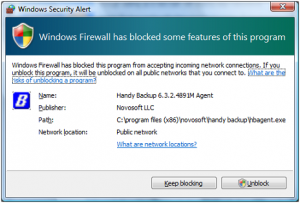We often view the board as being distinct from the “rest” of the organization. The Board governs and the organization operates the programs. Many governance theorists support this approach. They suggested that there be a firewall between the board and the organization.
The firewall prevents meddling, chaos, and confusion. No meddling  allowed. The board focuses on policy and the organization on implementation. The CEO should not be a member of the board nor should the board talk with staff.The firewall is there to prevent any viruses from contaminating the system.
allowed. The board focuses on policy and the organization on implementation. The CEO should not be a member of the board nor should the board talk with staff.The firewall is there to prevent any viruses from contaminating the system.
This approach, however, is old school. Emerging best practices suggest that the firewall approach must be replaced with a more constructive approach. Board Source suggests that the relationship between the board and the organization should be seen more as a partnership. My 20 years experience as a CEO and doctoral research that examined this relationship supports the partnership idea. In fact, the term governance partnership was developed as an alternative to the firewall approach. If you have any doubt, check out Peter Drucker‘s 1990 article entitled Lessons for Successful Nonprofit Governance. He states that boards and executives must be involved in both functions and must coordinate their work accordingly. They must work together…as a team…as a partnership.
So, nonprofit governance and executive leaders — it’s time to get rid of the firewall! Lets talk about what it means to have a governance partnership!

Is it fair to say that the “shared leadership” work is encapsulated in the partnership language? Either way, firewall or not, there is really only one nonprofit “owner” (albeit a surrogate owner) and that is the board. Firewall is helpful in ensuring unblurred lines (which gets messy over the issues of who does what and when) but firewall can also be divisive. Either way, with or without a firewall it’s important to ensure that roles and responsibilities are clear for both parties. Certainly though, under the rubric of share leaders, I believe that a good board and exec share equal influence on the decisions around Theory of Change, Vision and (strategic) direction, values and what is or has been success.
Role clarity is one of the characteristics of the partnership. An effective governance partnership requires that the roles of the board and board leadership as well as the organization and organizational leadership is clear. We get into difficulty when those definitions are used as a rubric that creates impermeable boundaries akin to a firewall. Clear boundaries, yes….firewall, no!